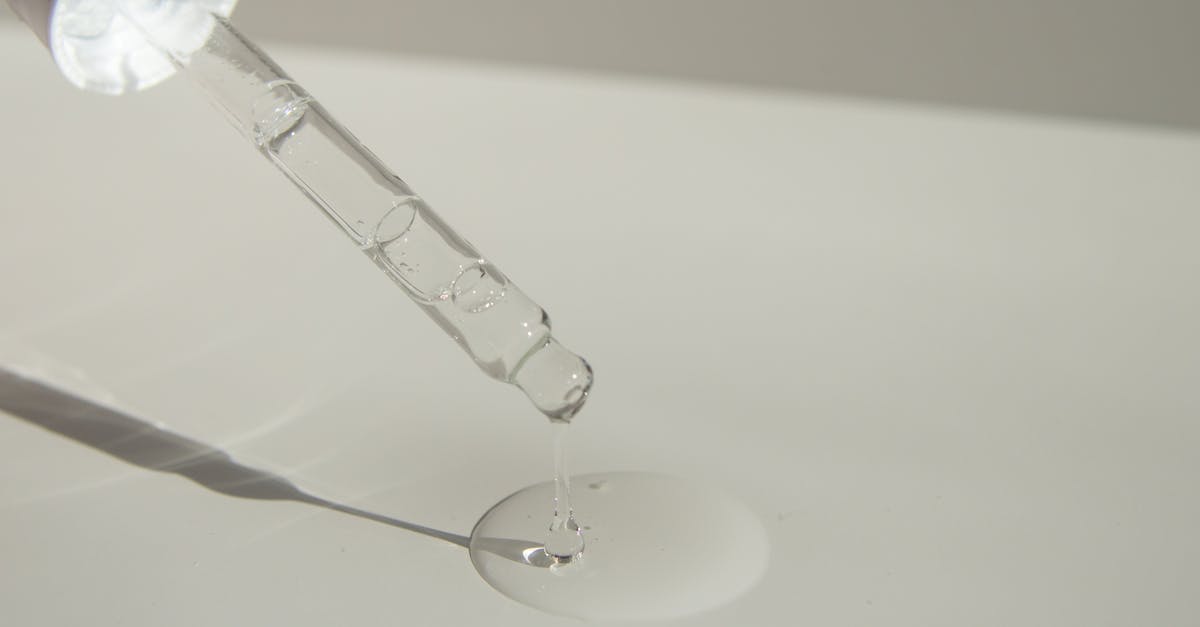What is a Butterfly Rash?
A butterfly rash is a distinctive skin condition that appears on the face, particularly on the cheeks and nose. It is called a butterfly rash because of its shape, which resembles the wings of a butterfly. This rash is often a symptom of an underlying health condition, such as lupus or rosacea.
The butterfly rash is characterized by its redness and its flat or raised texture. It may also be accompanied by other symptoms, such as itching, burning, or swelling. While the rash itself is not harmful, it can be a sign of a more serious health issue.
It is important to note that not all rashes on the face are butterfly rashes. Other skin conditions, such as eczema or psoriasis, can also cause redness and irritation on the face. However, the butterfly rash is unique in its shape and location.
If you suspect that you have a butterfly rash, it is important to seek medical attention. A healthcare professional can help diagnose the underlying cause of the rash and recommend appropriate treatment. In some cases, a skin biopsy may be necessary to confirm the diagnosis.
Overall, understanding what a butterfly rash is and its characteristics is important for identifying potential health issues. If you notice a butterfly rash on your face, seek medical attention promptly to ensure proper diagnosis and treatment.
Table of Content
- Causes of Butterfly Rash
- Symptoms of Butterfly Rash
- Diagnosis of Butterfly Rash
- Treatment of Butterfly Rash
- Prevention of Butterfly Rash
- Conclusion
Causes of Butterfly Rash
Butterfly rash is a skin condition that can be caused by a variety of factors. Some of the most common causes of butterfly rash include lupus, rosacea, dermatomyositis, erythema migrans, sunburn, and allergic reactions.
Lupus is an autoimmune disease that can cause inflammation throughout the body, including the skin. Butterfly rash is a common symptom of lupus, and it typically appears on the face in the shape of a butterfly. Rosacea is another skin condition that can cause butterfly rash, and it is characterized by redness, swelling, and acne-like bumps on the face.
Dermatomyositis is a rare inflammatory disease that can cause muscle weakness and skin rashes. Butterfly rash is a common symptom of dermatomyositis, and it typically appears on the face and eyelids. Erythema migrans is a skin rash that is caused by a tick bite, and it is often associated with Lyme disease.
Sunburn is a common cause of butterfly rash, and it can occur when the skin is exposed to too much sunlight. Allergic reactions can also cause butterfly rash, and they can be triggered by a variety of substances, including medications, foods, and cosmetics.
If you are experiencing butterfly rash, it is important to see a doctor for a proper diagnosis. Your doctor may perform a physical examination and order a skin biopsy to determine the underlying cause of your rash. Treatment for butterfly rash will depend on the underlying cause, and it may include medications, creams, lifestyle changes, and home remedies.
In order to prevent butterfly rash, it is important to protect your skin from the sun, avoid allergens, and manage any underlying health conditions. By taking these steps, you can help to reduce your risk of developing butterfly rash and other skin conditions.

Symptoms of Butterfly Rash
Butterfly rash is a distinctive skin condition that is characterized by a red, butterfly-shaped rash that appears on the cheeks and nose. The rash can also spread to other parts of the face and body. The symptoms of butterfly rash can vary depending on the underlying cause of the condition.
In general, the rash is accompanied by other symptoms such as fever, fatigue, joint pain, and muscle weakness. These symptoms can be mild or severe, depending on the severity of the rash and the underlying cause.
It is important to note that butterfly rash is often a symptom of an underlying health condition, such as lupus or rosacea. Therefore, it is important to seek medical attention if you experience any of these symptoms.
If you notice a butterfly rash on your face, it is important to monitor the rash and any accompanying symptoms. You should also seek medical attention if the rash is accompanied by other symptoms such as difficulty breathing, chest pain, or severe swelling.
In some cases, butterfly rash can be a sign of a serious medical condition that requires immediate treatment. Therefore, it is important to seek medical attention as soon as possible if you experience any of these symptoms.
Overall, the symptoms of butterfly rash can vary depending on the underlying cause of the condition. If you experience any symptoms of butterfly rash, it is important to seek medical attention to determine the underlying cause and receive appropriate treatment.

Diagnosis of Butterfly Rash
Diagnosing butterfly rash can be challenging as it can be a symptom of various underlying health conditions. However, there are a few ways to diagnose the rash accurately.
The first step in diagnosing butterfly rash is a physical examination by a dermatologist or a healthcare provider. During the examination, the doctor will look for the characteristic butterfly-shaped rash on the face and other parts of the body. They will also check for other symptoms such as joint pain, fatigue, and fever, which can help identify the underlying cause of the rash.
If the doctor suspects an autoimmune disease such as lupus, they may order blood tests to check for specific antibodies that are present in people with lupus. A skin biopsy may also be performed, where a small sample of skin is taken from the affected area and examined under a microscope to determine the cause of the rash.
It is essential to provide the doctor with a detailed medical history, including any medications or supplements you are taking, as some drugs can cause a butterfly rash as a side effect. Additionally, if you have a family history of autoimmune diseases, it is crucial to inform your doctor as it can increase your risk of developing lupus or other autoimmune diseases.
In conclusion, diagnosing butterfly rash requires a thorough physical examination, blood tests, and skin biopsy. It is essential to provide your doctor with a detailed medical history to help identify the underlying cause of the rash accurately. Early diagnosis and treatment can help manage the symptoms and prevent complications associated with underlying health conditions.

Treatment of Butterfly Rash
Butterfly rash is a condition that can be treated with a combination of medications, lifestyle changes, and home remedies. The treatment plan will depend on the underlying cause of the rash and the severity of the symptoms.
Medications and Creams: Topical creams and ointments can be used to reduce inflammation and redness associated with butterfly rash. Over-the-counter hydrocortisone creams can be used to relieve itching and irritation. Prescription-strength creams such as tacrolimus and pimecrolimus can also be used to reduce inflammation. In severe cases, oral medications such as corticosteroids, antimalarials, and immunosuppressants may be prescribed by a doctor.
Lifestyle Changes: Certain lifestyle changes can help manage butterfly rash symptoms. Avoiding triggers such as sunlight, stress, and certain foods can help prevent flare-ups. Wearing protective clothing and using sunscreen with a high SPF can also help protect the skin from UV rays. Maintaining a healthy diet and exercising regularly can also help improve overall health and reduce the risk of flare-ups.
Home Remedies: There are several home remedies that can be used to manage butterfly rash symptoms. Applying cool compresses to the affected area can help reduce inflammation and redness. Aloe vera gel can also be applied to the skin to soothe irritation. Drinking plenty of water and staying hydrated can also help improve skin health and reduce the risk of flare-ups.
It is important to work with a healthcare professional to develop a treatment plan that is tailored to your individual needs. With proper treatment and management, butterfly rash can be effectively controlled, allowing individuals to live a healthy and active life.

Prevention of Butterfly Rash
Prevention of Butterfly Rash is an important aspect of managing this condition. While some causes of butterfly rash are beyond our control, there are still steps we can take to minimize the risk of developing this condition.
Sun Protection: One of the most important steps in preventing butterfly rash is to protect your skin from the sun. Exposure to the sun's harmful UV rays can trigger or worsen the rash. It is recommended to use a broad-spectrum sunscreen with an SPF of at least 30 and to reapply it every two hours. Wearing protective clothing such as long-sleeved shirts, hats, and sunglasses can also help.
Avoiding Allergens: If you have identified specific allergens that trigger your butterfly rash, it is important to avoid them as much as possible. This may include certain foods, cosmetics, or medications. If you are unsure about what triggers your rash, keeping a journal of your symptoms and activities can help you identify potential triggers.
Managing Underlying Health Conditions: In some cases, butterfly rash may be a symptom of an underlying health condition such as lupus or rosacea. Managing these conditions through medication and lifestyle changes can help prevent the rash from occurring or worsening.
Overall, prevention of butterfly rash involves protecting your skin from the sun, avoiding allergens, and managing underlying health conditions. By taking these steps, you can minimize the risk of developing this condition and improve your overall skin health.

Conclusion
Butterfly rash is a condition that can be caused by a variety of factors, including lupus, rosacea, and sunburn. It is important to identify the underlying cause of the rash in order to properly treat it. Treatment options include medications, creams, lifestyle changes, and home remedies. Prevention measures such as sun protection, avoiding allergens, and managing underlying health conditions can also help to prevent butterfly rash from occurring.
In conclusion, butterfly rash can be a frustrating and uncomfortable condition to deal with, but with proper diagnosis and treatment, it can be managed effectively. It is important to seek medical attention if you suspect you may have butterfly rash, as it can be a symptom of a more serious underlying condition. By taking steps to prevent butterfly rash and managing any underlying health conditions, you can reduce your risk of developing this condition and enjoy healthy, clear skin. Remember to always consult with a healthcare professional before starting any new treatment or prevention plan.




